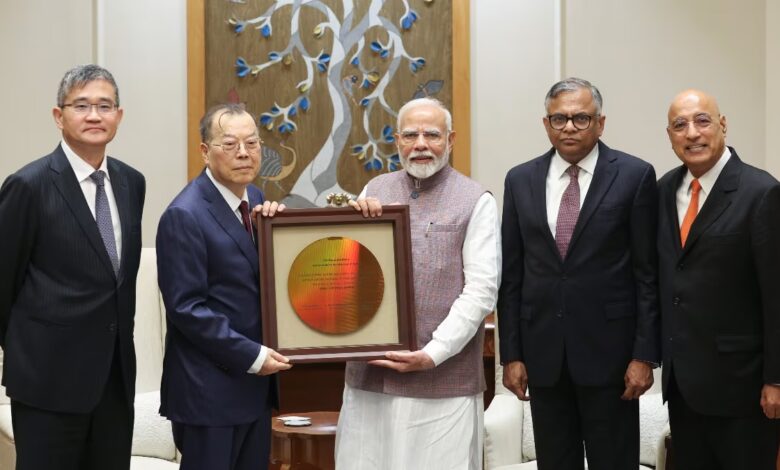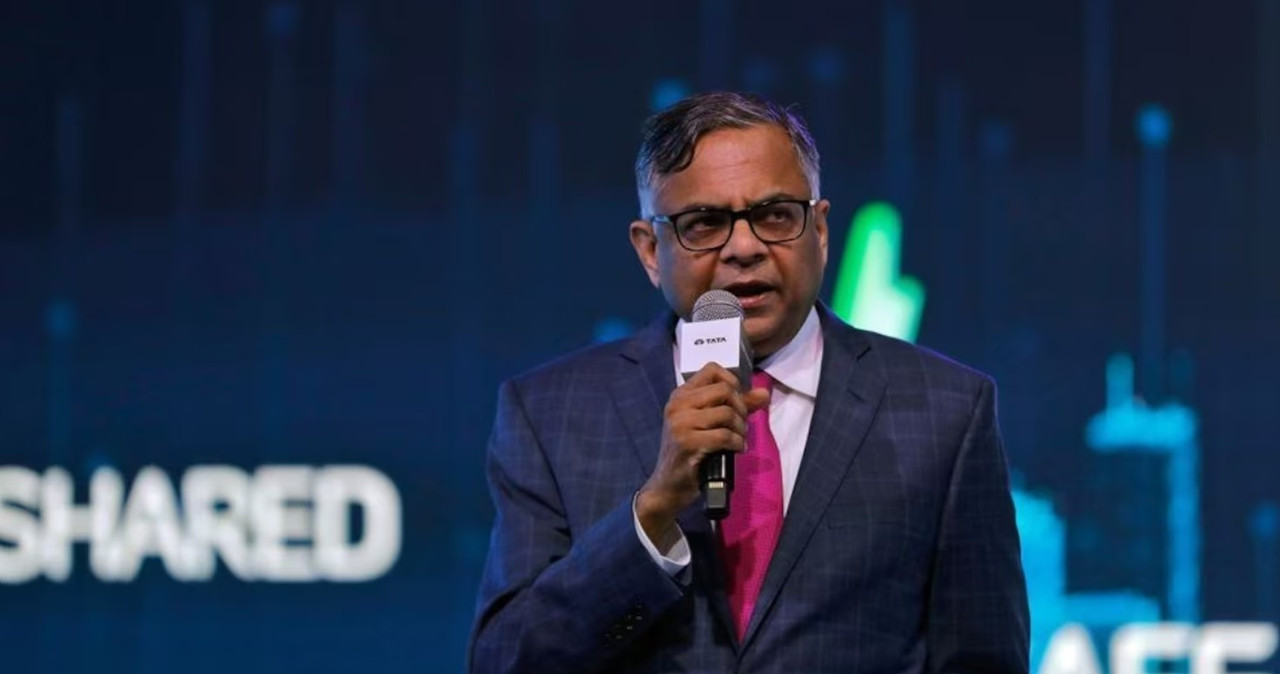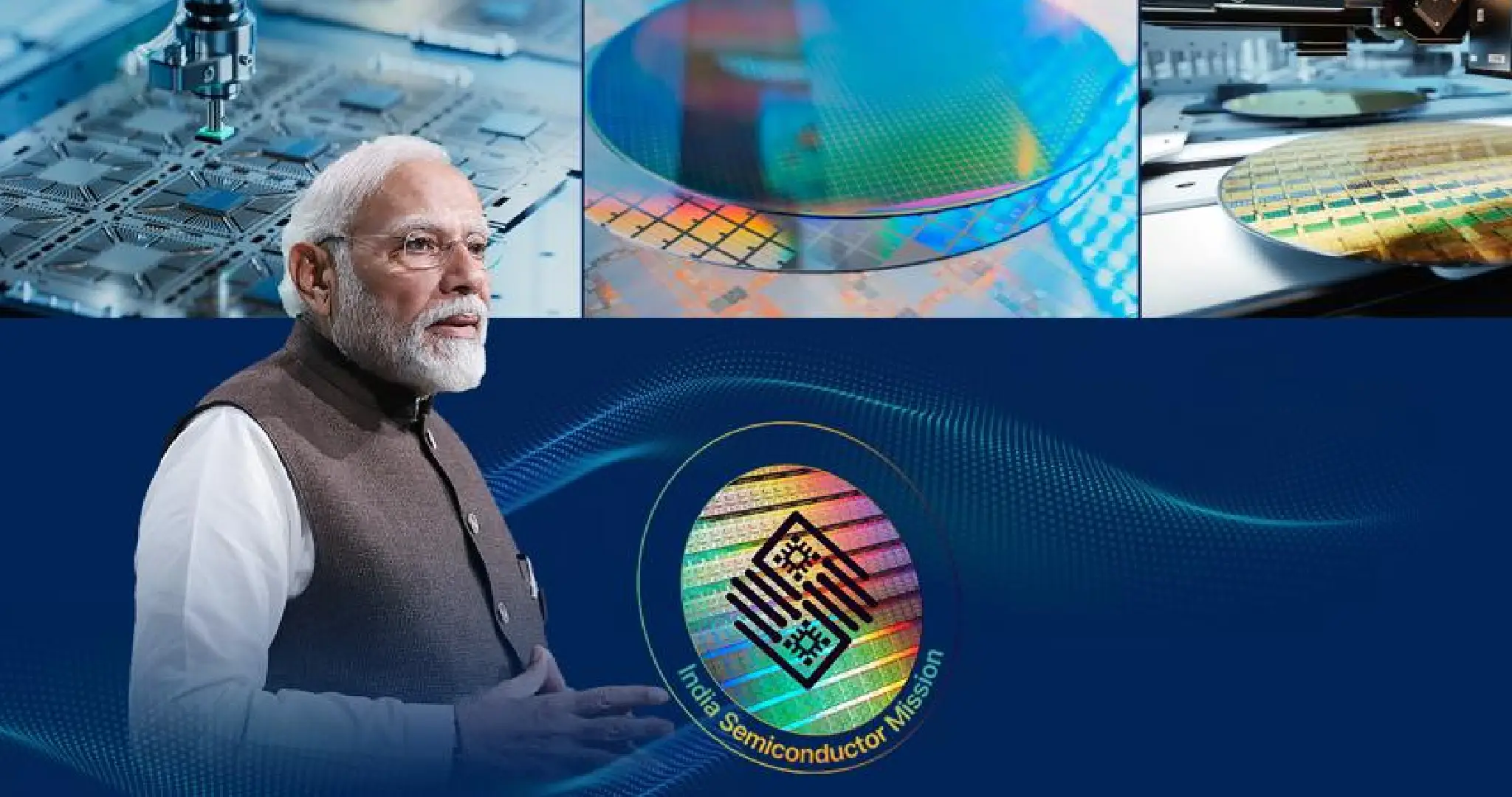PM Modi, Tata, and PSMC Join Forces to Build ₹91,000 Crore Semiconductor Plant in Gujarat. Can this project make India a global semiconductor leader?
Prime Minister Narendra Modi, on 26 September 2024, met the top management of Tata Sons and Taiwan's Powerchip Semiconductor Manufacturing Corporation (PSMC) to give shape to launching a mega chip manufacturing unit at Dholera in Gujarat. It is the most ambitious project in which investment worth ₹91,000 crore or approximately $11 billion will help remodel India's semiconductor usage.

On 26 September 2024, Tata Sons’ management met with Prime Minister Narendra Modi and Taiwan’s Powerchip Semiconductor Manufacturing Corporation (PSMC) to discuss a massive new semiconductor fabrication facility often referred to as a “chip fab”-built in Dholera, Gujarat. It’s big news about the project since it has an investment of ₹91,000 crores, about $11 billion. And all this is going to help India take a big step forward regarding the semiconductor industry.
What is this project?
The project with which PM Modi discussed this issue with Tata Sons and PSMC is building a huge semiconductor manufacturing facility. This is very important because semiconductors are the tiny chips that power almost every electronic gadget we use today, from smartphones and computers to cars and even washing machines. Without those chips, none of those would have worked.
The new Dholera chip fab, the first of its kind in India, will use cutting-edge technology to produce a range of chips in almost every industry. A few examples include power management ICs that control power supply in electronic devices.
- Display drivers: They control the screens on devices such as smartphones and TVs.
- Microcontrollers (MCUs): These small chips are tiny computers found within many devices-from kitchen appliances to cars.
- Logic high-performance computing chips: These are used in powerful computers and servers.
This will use chips produced in this plant for most industries, including automotive (smart cars), computing (servers and PCs), data storage for cloud computing, wireless communications (5G networks), and AI. All are growing with huge demand for more and better chips.
Why is this meeting important?

Building India’s First Big Chip Facility It is a matter of history that India has, until now, always been heavily dependent on other nations for most of its semiconductor requirements. This project, therefore will help to constitute India’s ability to manufacture its own chips, a very big step toward reduced dependence on other nations for such important technology.
The facility will likely add more than 20,000 people working directly and indirectly to the economy. The jobs are also highly skilled in engineering, manufacturing, and technology. More potential is also anticipated for offering jobs above 100,000 people from the locality, especially when the expansion of the facility boosts other supporting industries in the region.
The semiconductors produced in India will further help in developing the Indian technology sector. This will attract many companies all over the world to set up offices in India, thus pumping more investments and making India’s economy more powerful.
Important Players in this Project
The two important players involved in this large project are:
Tata Sons Tata is one of India’s oldest and biggest companies, with businesses in almost all commodities, from steel and cars to software and power. Tata Electronics is the subsidiary through which it is working on this semiconductor project. Chairman of Tata Sons N. Chandrasekaran said, “Tata has always been a pioneer in different industries, and now it is ready to do the same in the semiconductor space.”
Powerchip Semiconductor Manufacturing Corporation (PSMC): PSMC is a Taiwan-based semiconductor manufacturing company. Taiwan is amongst the front runners in the domain of semiconductors. Therefore, PSMC brings much experience and technical know-how to this project. According to Dr. Frank Huang, CEO of PSMC, this tie-up will enable both Tata and PSMC to benefit from the rapidly emerging Indian market.
March 2024
This is when PM Modi laid the foundation stone for the new semiconductor fab. Officially, this marks the beginning of the project, and since then, work has been in place to construct the facility.
September 2024
The recent meeting between PM Modi, Tata, and PSMC was held on how the project is coming along and finalising agreements on technology transfer and other key details.
Fab is expected to take at least two years to construct, and it will start making the chips in another two to three years.
Why does India focus on semiconductors?
Semiconductors are important for the global economy, especially in this digital age. It is through these chips that anything from smartphones to laptops, cars, and even medical equipment functions. The world recently has witnessed major shortages in semiconductors, something, which has choked many industries. For example, car manufacturing slowed down because they could not get chips.
India has been dependent on imports for semiconductors over the years; however, the global chip shortage brought to light that having a home-based manufacturing base is essential. This is why PM Modi and his government have also been very aggressive in building a robust semiconductor ecosystem in India. With this, India can become self-sufficient, reduce its dependence on imports, and play a major role globally in the semiconductor market.
Economic and Technological Impact of the Project
This semiconductor fab at Dholera will be showing gigantic effects on the economics of India. First and foremost, the investment of ₹91,000 crores made by the company is one of the biggest foreign direct investments in the country’s tech sector. It will better the economy of India by creating jobs, boosting exports, and encouraging other companies to invest in India.
It forms one of the linchpins of the government’s flagship program, “Make in India”, aimed at making India not dependent on imported items and encouraging more local manufacturing. With the local production of semiconductors, India will be able to take care of its needs and export chips to other countries, thereby reducing chip shortage globally.
Technologically speaking, the Dholera fab shall be a next-generation facility with the latest factory automation. That would mean AI and ML shall be used in the optimisation of production to make it more efficient. This means that the chips coming out of the Indian fab shall be of the highest quality and truly comparable with any other fab anywhere else in the world.
India’s semiconductor dreams
A larger global trend is also that India is pushing for semiconductor manufacturing. With the world becoming increasingly digital, the demand for semiconductors is shooting up with a high growth rate. Several countries are heavily investing to establish their semiconductor capability, including the United States and China. India has, for the time being, joined this queue with projects like the one in Dholera.
There are many reasons why India should focus on semiconductors now

There will be an emerging demand for semiconductors with growth in leading industries, including AI, 5G, and electric vehicles. These technologies have a huge market in India and therefore, it make obvious sense to build semiconductor manufacturing capabilities to meet such demand.
The COVID-19 coronavirus pandemic and other global events have shown how fragile the world’s supply chain is for semiconductors. Localisation of chips will cut down on the risk of disruptions, thus permitting Indian industries to have a steady supply of semiconductors.
India has a very high talent pool of engineers and tech workers that could be recruited as a fuel for the growth of this semiconductor industry. Through education and training, India should be able to develop a workforce skilled both in semiconductor manufacturing and design.
PM Modi, Tata Sons, and PSMC achieved a giant leap forward towards fulfilling the country’s semiconductor aspirations today. The landmark project is the Rs 91,000 crore chip facility coming up at Dholera. This will help India become more self-reliant, usher in employment, and thus establish the country as one of the major players in the global semiconductor industry.
Signing off on this deal sends out a very strong signal to the world of India’s intent to play in the high-tech space of semiconductors. This is just the tip of the iceberg. More such projects have matured, and India will further consolidate its position as a global hub for technology. Well and indeed a promising future for semiconductors in India-and this project is just one big reason why.




